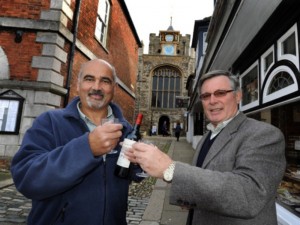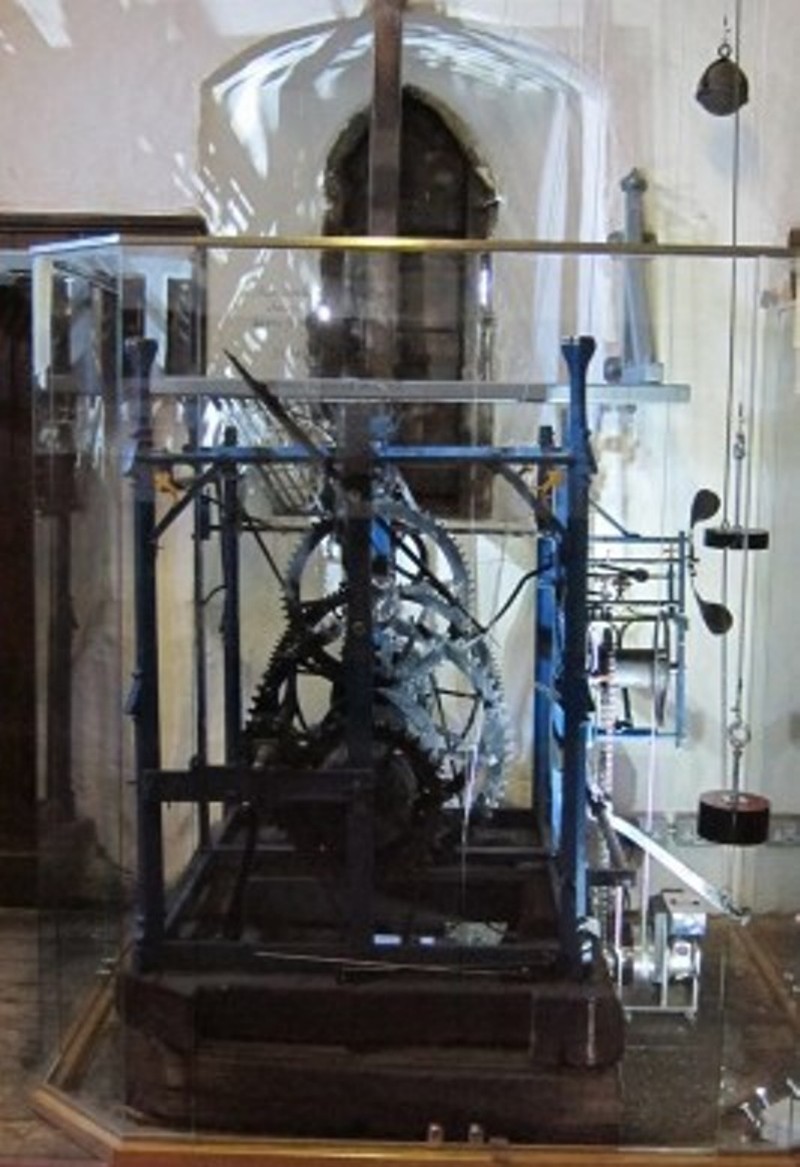For the Friends of St Mary’s Church in Rye, 2013 was dominated by work to renovate Rye’s ancient turret clock. This involved raising funds to meet the £35,000 cost and co-ordinating several nationwide contractors. The contractors removed and refurbished the clock’s mechanism, refitted it on the original mounts and housed it within a superb new glass case. In addition, the winding mechanism was modernised and new lighting installed, with an access frame and a tailor-made curtain to conceal stored items and surrounding woodwork. Many visitors to one of Rye’s most photographed attractions have said the finish is stunning.
Church records show the existing clock was fitted in 1561-2 by a Huguenot with Winchelsea connections called Lewys Billiard, who replaced an earlier unreliable clock installed in 1513. Since the 19th century, overhauls of the clock have been well documented. There was one in the 1860’s, probably by JN Masters of Rye, one in 1926 and another in 1960 carried out by JW Benson of London. The prominent outside dial was recorded in 1667 by Samuel Jeake the younger. The original Quarter Boys, now in the Clare Chapel, were installed in 1761 but were replaced by replicas in 1969. The long bob pendulum, signed by R Gill of High Street, Rye dates from 1810 and replaced one from 1674.
The most recent overhaul provided a rare opportunity to inspect the clock closely and there was a surprising revelation. One of the drive wheels bears signs of studs, which at some stage have been removed. These studs could have driven a carillon, or set of chimes, that no longer exists but was recorded in a church census of 1724. Lead contractor Cumbria Clocks, who maintain Big Ben, also suggest that engineering details such as the design of plates on the frame, are so similar to the clocks of Wells and Salisbury Cathedrals (both made in the late 14th century) that the Rye clock may originate from the same period. Further tests are being planned to see if that is so, which would support the view that some, or all of our clock, is second-hand, perhaps from an abandoned Tudor monastery.
News of the project led to our friends in Winchelsea speculating that Rye’s clock is actually one purchased by them in 1388. By 1560-61 Winchelsea had fallen into a “wretched state” and one suggestion is that Winchelsea sold the clock mechanism to the then flourishing Rye. Sadly there is no evidence to support such scurrilous claims but the good-humoured spat presented an opportunity for burghers from Rye and Winchelsea to climb the clock tower together, shoulder to shoulder as they once were in the 14th century, during their joint venture to recapture the Rye bells from the French. The occasion allowed folk from the two towns to recall their many joint military endeavours from 1588 to 1940 while gazing with admiration on the refurbished medieval mechanism. In comradeship it was agreed to put away niggling disputes and ponder what might have been had the towns always co-operated so closely.
For further information on the clock go to http://www.facebook.com/FriendsOfStMarysChurchRye

Photographs by Anthony Kimber



